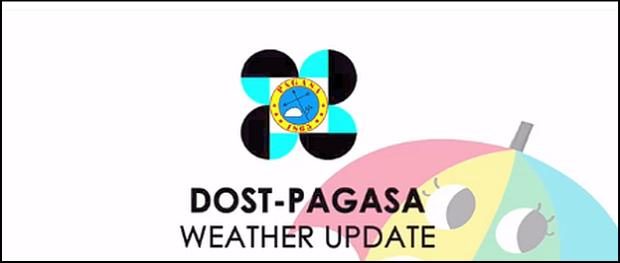
MANILA, Philippines — Cloudy skies are expected to prevail for the first day of the New Year especially in Luzon, while temperatures up north are expected to start dropping due to the northeast monsoon.
Weather forecasts from the Philippine Atmospheric, Geophysical and Astronomical Services Administration (Pagasa) on Thursday afternoon showed that the tail end of a frontal system still affects northern and eastern portions of Luzon especially Cagayan Valley, Ilocos Region, and some parts of Southern Luzon like Metro Manila and Calabarzon.
Areas affected by the northeast monsoon or amihan and the tail end of a frontal system can expect occasional rains and isolated thunderstorms from Thursday night, New Year’s Eve, up to Friday.
For the rest of the country, a generally fair weather would occur as Pagasa does not monitor any tropical cyclone that may affect weather systems in the next three to five days.
Temperatures in Baguio City would range from 13 to 18 degrees Celsius, while it would be around 19 to 27 degrees in Tuguegarao. Tagaytay would also feel cold weather with 21 to 27 degrees, Metro Manila at 24 to 30 degrees, and Legazpi with 25 to 29 degrees.
Weather would be slightly better for Visayas and Mindanao, although isolated rains may still occur especially by afternoon and night. Temperatures for Cebu would play between 24 to 31 degrees Celsius, 25 to 30 degrees Celsius for Tacloban, 23 to 31 degrees for Cagayan de Oro, and 25 to 31 degrees for Davao City.
More of the country’s coastlines were placed under a gale warning due to the frontal system and amihan.
The gale warning now spans the whole eastern seaboards of Luzon, Visayas, and Caraga in Mindanao; the northern waters of Luzon including Batanes and Babuyan Islands; the outer western seaboards from Ilocos Region, the western waters of Central Luzon, down to Palawan.
Fisherfolk and boat transfer operators using small boats are not allowed to set sail in these areas as waves may reach heights of 2.8 meters to 6.8 meters.